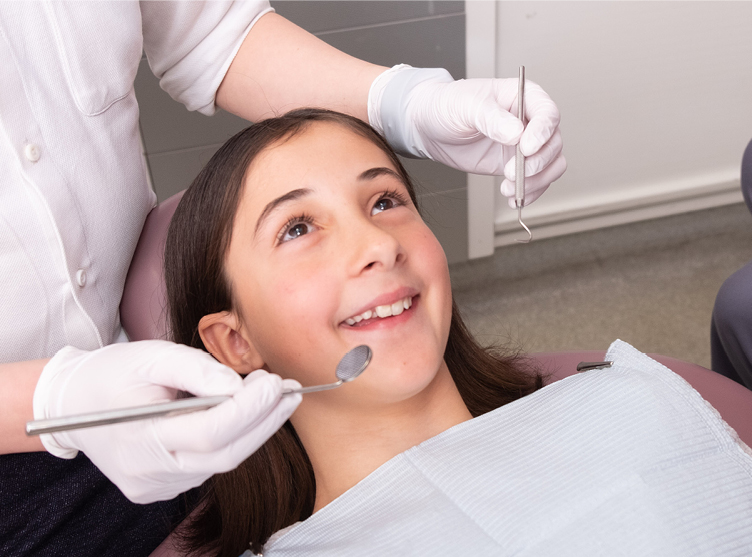Legacy Orthodontics Fundamentals Explained
Legacy Orthodontics Fundamentals Explained
Blog Article
3 Easy Facts About Legacy Orthodontics Shown
Table of Contents7 Easy Facts About Legacy Orthodontics ShownGet This Report about Legacy OrthodonticsThe Greatest Guide To Legacy OrthodonticsLegacy Orthodontics Can Be Fun For AnyoneSome Of Legacy Orthodontics
In addition, we offer flexible therapy schedules, flexible payment alternatives and an enjoyable, satisfying experience.An orthodontist is a dentist educated to diagnose, stop, and deal with teeth and jaw irregularities. Orthodontists function with people of all ages, from youngsters to grownups.
Malocclusion, or misaligned teeth, can lead to oral concerns, consisting of tooth degeneration, periodontal disease, and challenging or agonizing eating. But not everyone is birthed with straight teeth. If you have a poor bite or big spaces between your teeth, you might wish to speak with a dentist concentrating on orthodontic treatment.
The Definitive Guide to Legacy Orthodontics
( Image Credit Report: DigitalVision/Getty Images) Orthodontists utilize taken care of and detachable oral gadgets, like braces, retainers, and bands, to alter the placement of teeth in your mouth. Orthodontic treatment is for oral irregularities, including: Misaligned teethBite troubles, like an overbite or an underbiteCrowded teeth or teeth that are also far apartJaw misalignmentThe goal of orthodontic therapy is to enhance your bite.
While you might assume of orthodontists as mainly for kids or young adults who need braces, they can correct dental problems at any kind of age. Orthodontists participate in university, oral school, and orthodontic institution.
, but not all dental experts are orthodontists. They concentrate on two locations: Exactly how to appropriately and safely move teeth Exactly how to appropriately direct growth in the teeth, jaw, and faceOnce an orthodontist has actually finished training, they have the alternative to end up being board accredited.
What Does Legacy Orthodontics Mean?
Misalignment, or malocclusion, is the most usual factor people see an orthodontist. It is hereditary and is the result of size differences between the upper and reduced jaw or between the jaw and teeth. Malocclusion causes tooth congestion, an irregular jaw, or uneven bite patterns. Malocclusion is generally treated with: Your orthodontist attaches steel, ceramic, or plastic square bonds to your teeth.
If you have just small malocclusion, you might have the ability to use clear dental braces, called aligners, rather of standard dental braces (http://www.place123.net/place/legacy-orthodontics-leesburg-united-states). Some individuals need a headwear to aid move teeth into line with pressure from outside the mouth. After braces or aligners, you'll need to use a retainer. A retainer is a customized tool that keeps your teeth in position.
They're usually used on kids. They can develop added area in the mouth without needing to draw teeth. If you have a serious underbite or overbite, you might need orthognathic surgical procedure (likewise called orthodontic surgical treatment) to lengthen or reduce your jaw. Orthodontists make use of wires, surgical screws, or plates to sustain your jaw bone.
You might require to see an orthodontist if you have: Crowding or not sufficient area for all of your teethOverbite, when your top teeth come over your bottom teethUnderbite, when your bottom teeth are also far forwardSpacing or concerns with gapsCrossbite, which is when your upper teeth fit behind your base teeth when your mouth is closedOpen bite or a vertical space between your front bottom and top teethMisplaced midline, when the center of your base and top teeth do not line up Correcting an oral malocclusion can: Make attacking, chewing, and speaking easierImprove the proportion of our face and your general appearanceEase pain from temporomandibular joint disordersDifferent your teeth and make them much easier to cleanse, helping stop dental cavity or dental caries It's typically a dental expert that initially notices misaligned teeth throughout a regular exam.
Some Known Questions About Legacy Orthodontics.

Throughout your initial orthodontic appointment, you'll likely have: A dental examPhotos taken of your face and smileDental X-raysPanoramic (360 level) X-rays of your face and headImpressions to develop mold and mildews of your teethThese examinations will certainly assist your orthodontist understand just how to wage your therapy. invisalign. An orthodontist is a dental practitioner that's had training to treat your teeth and jaw
An orthodontist is focused on your bite, so something like a damaged tooth would certainly be managed by a dental expert. Orthodontists are concentrated on your bite, or the method your teeth fit with each other, and the straightness of your teeth.
Ever wondered how celebs always appear to have flawlessly lined up teeth? The answer usually lies in the proficient hands of an orthodontist. However exactly what does an orthodontist do? Orthodontists are oral experts who focus on dealing with irregularities in the teeth and jaws. Their experience surpasses just developing a beautiful smile; it includes improving your total oral health and feature.
A Biased View of Legacy Orthodontics

, orthodontists have a varied toolkit at their disposal. These reliable dental braces utilize a system of braces bound to the teeth and connected by wires.
These detachable trays are tailor-made to gradually shift the teeth's setting. In cases of slim jaws, palatal expanders can be utilized to produce space for proper tooth alignment.
Report this page